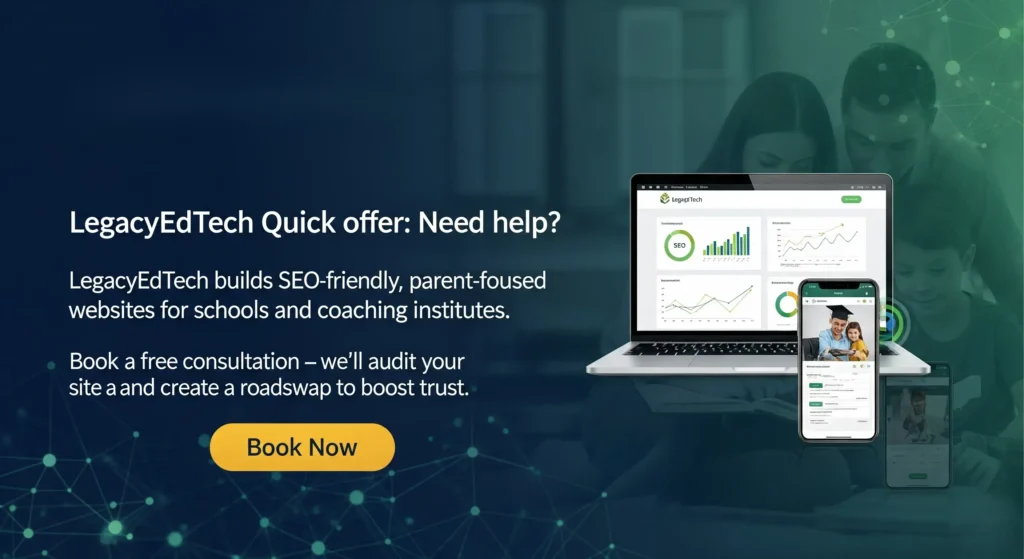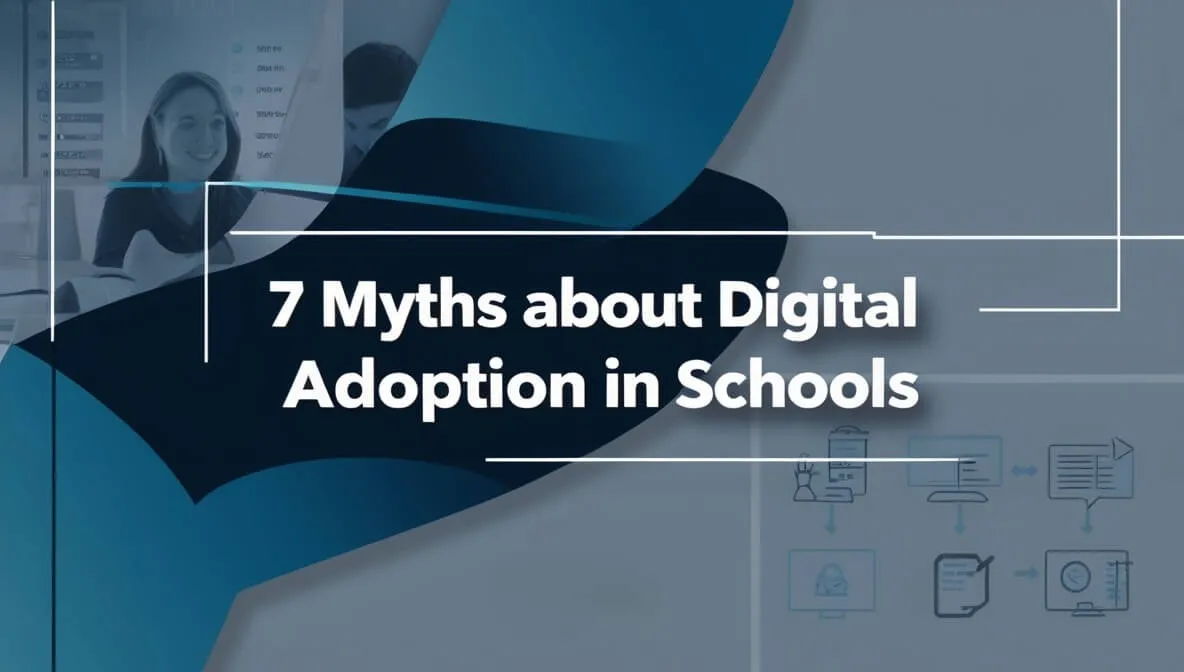Table of Contents
- Introduction
- Myth 1: Digital Adoption in Schools Is Too Expensive
- Myth 2: Technology Replaces Teachers
- Myth 3: Only Large Schools Can Afford Digital Adoption
- Myth 4: Students Get Distracted by Technology
- Myth 5: Digital Adoption in Schools Is Too Complex
- Myth 6: Digital Systems Are Not Secure
- Myth 7: Digital Adoption Doesn’t Improve Learning Outcomes
- Benefits of Moving Beyond Myths
- Case Example
- FAQs
- Conclusion
- Action mode
Introduction
Many school leaders agree that technology is the future of education, yet hesitation remains. Why? Because misconceptions and myths about digital adoption in schools continue to cloud judgment. From cost concerns to teacher resistance, these myths delay progress. In reality, school digital transformation brings transparency, efficiency, and improved learning experiences. Let’s bust the seven most common myths and reveal why digital adoption in schools is a necessity, not a luxury.
Myth 1: Digital Adoption in Schools Is Too Expensive
At first glance, digital tools and school ERP solutions may look costly. But the truth is:
- Schools save money in the long run by reducing paper, printing, and administrative costs.
- Affordable, scalable options exist for small and mid-sized schools.
- Many EdTech providers offer flexible pricing models.
Reality: Digital adoption in schools is an investment that pays off by improving efficiency and reducing hidden costs.
Myth 2: Technology Replaces Teachers
A common fear is that digital adoption will push teachers out of classrooms.
- Technology supports, not replaces, educators.
- Tools like smart classrooms, LMS, and ERP free teachers from paperwork.
- Teachers get more time for personalized student support.
Reality: Teachers become facilitators and mentors, with technology enhancing their effectiveness.
Myth 3: Only Large Schools Can Afford Digital Adoption
Many believe smaller schools cannot benefit.
- Cloud-based EdTech makes tools affordable for all school sizes.
- Even low-cost devices and apps can transform learning.
- Local language content and offline features make solutions accessible.
Reality: Digital adoption in schools is scalable — small schools can start small and grow gradually.
Myth 4: Students Get Distracted by Technology
Skeptics worry that digital tools encourage distractions.
- Properly designed EdTech focuses students on learning.
- Features like gamification and interactive content increase engagement.
- ERP dashboards give parents and teachers visibility into student activity.
Reality: Structured use of technology boosts focus, not distractions.
Myth 5: Digital Adoption in Schools Is Too Complex
Many schools think digital transformation requires advanced technical expertise.
- Modern platforms are user-friendly and require minimal training.
- Vendors provide onboarding, demos, and ongoing support.
- Teachers and admins adapt quickly with practice.
Reality: With guided training, digital adoption in schools is simple and seamless.
Myth 6: Digital Systems Are Not Secure
Data security is a top concern.
- Reputed EdTech providers follow strict data security protocols.
- Cloud solutions offer encrypted storage and backups.
- Schools can control access levels for staff, parents, and students.
Reality: With the right vendor, digital adoption in schools is safer than traditional manual systems.
Myth 7: Digital Adoption Doesn’t Improve Learning Outcomes
Some argue that technology adds flash but no real value.
- Research shows EdTech boosts student motivation and retention.
- Personalized learning pathways help struggling students.
- Digital assessments provide instant feedback for improvement.
Reality: When used correctly, digital adoption in schools directly enhances learning outcomes.

Benefits of Moving Beyond Myths
Once schools move past these myths, they experience real transformation:
- Efficiency: Automates tasks like fee collection, attendance, and exam scheduling.
- Transparency: Parents get real-time updates on performance and payments.
- Savings: Reduced paperwork and manual labor costs.
- Improved Learning: Digital classrooms make education interactive and engaging.
Case Example
A mid-sized CBSE school in India adopted a school ERP solution after years of manual processes. Within six months:
- Administrative workload reduced by 35%.
- Fee collection efficiency improved by 22%.
- Parent satisfaction ratings increased by 40%.
This proves that digital adoption in schools is not a theory, but a practical advantage.
FAQs
What does digital adoption in schools really mean?
It refers to integrating technology into daily school operations, from administration to classrooms, ensuring both staff and students use it effectively.
Is digital adoption in schools suitable for rural or small institutions?
Yes, cloud-based and offline-first solutions make EdTech accessible to even small or rural schools.
How do teachers benefit from digital adoption in schools?
They save time on repetitive tasks, gain access to better teaching resources, and can focus more on student learning.
Are school ERP solutions part of digital adoption?
Absolutely. ERP systems centralize operations like attendance, exams, and finance, forming the backbone of digital adoption in schools.
Does digital adoption align with NEP 2020?
Yes, NEP 2020 encourages EdTech integration to enhance foundational literacy, assessments, and flexible learning pathways.
Conclusion
The myths around digital adoption in schools no longer hold weight. From cost and complexity to outcomes, facts show that digital tools empower teachers, engage students, and streamline administration. Schools that ignore digital adoption risk falling behind in compliance, efficiency, and learning outcomes. The future of education is clear: digital adoption in schools is essential for transformation.
Action mode
Ready to bust myths and embrace digital adoption in schools? Partner with Legacy EdTech to explore scalable, secure, and affordable digital solutions tailored for your institution.







